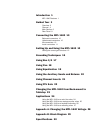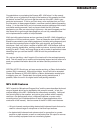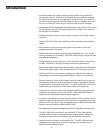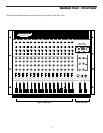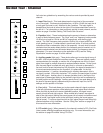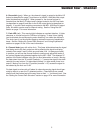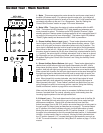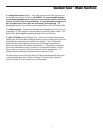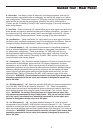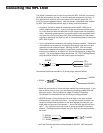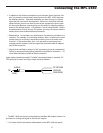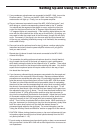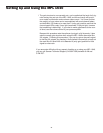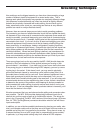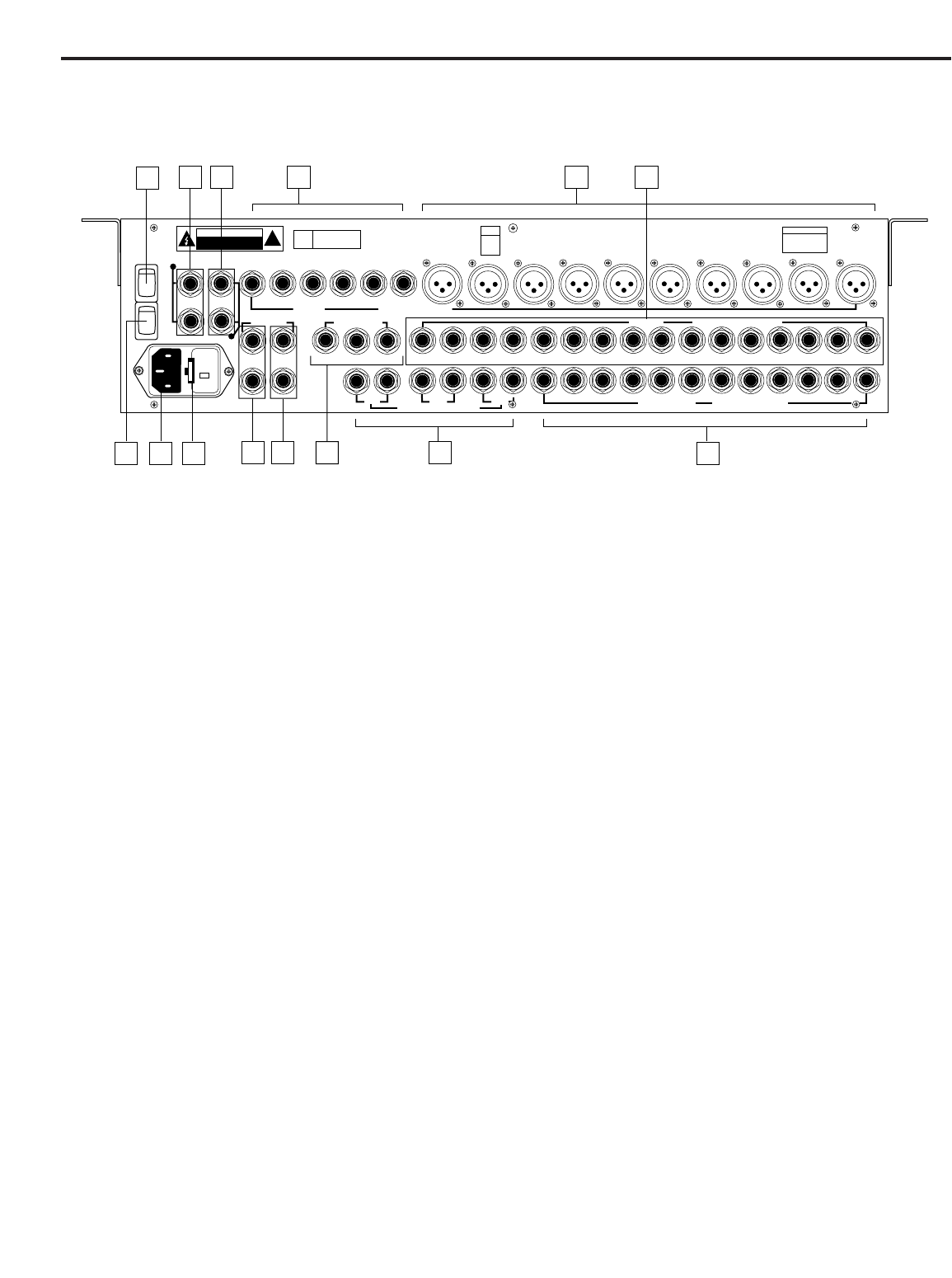
Guided Tour - Rear Panel
1: Phantom switch - When this switch is turned on, the MPL 1640 delivers 48 volts of
phantom power to pins 2 and 3 of all XLR microphone connectors (channels 1 - 10).
WARNING: Only turn this on or off with the MPL 1640 powered down. Before turn-
ing phantom power on, be sure to disconnect all non-microphone signal sources (such as
direct injection boxes) from the XLR mic jacks. Although phantom power will have no
adverse affect on connected dynamic microphones, it should be used only when one or
more condenser microphones are connected to the MPL 1640 (refer to the owners manu-
al of your microphone to determine whether or not it requires 48 volts phantom power).
If you’re not completely certain that one or more connected mics require 48 volts
phantom power, leave this switch OFF.
2: Power switch - This is what you use to turn the MPL 1640 on and off. To avoid
potential damage to your speakers, turn the mixer on before you turn on any connected
power amps—and turn it off after the power amps are turned off.
3: AC Input - Connect the supplied standard 3-pin “EEC” plug here.
4: Fuse sled - Fuse ratings are 1 amp for 115 V usage and .5 amp for 230 volt usage.
See Appendix A on page 28 for more information.
5: Main Mix Out (L,R) - These are the MPL 1640’s main outputs. You’ll usually use
these to connect the MPL 1640 to a power amplifier or to a tape recorder. These jacks
are electronically balanced, so use balanced three-conductor cabling and 1/4" TRS plugs
wherever possible (unbalanced two-conductor plugs can also be inserted into these jacks,
but you’ll get better signal quality and less noise and hum if you use balanced lines). See
the “Connecting the MPL 1640” section on page 10 for more information.
6: 3L/4R Out - These are the MPL 1640’s secondary outputs. The 3/4 Out jacks are
unbalanced, accepting standard two-conductor 1/4" plugs. For this reason, it is generally
preferable to use the Main Mix outputs when only two outputs are required. See the
“Using Bus 3/4” section on page 17 for more information.
7: Main Mix Insert (L,R) - Use these to insert an external in-line effects processor (such
as outboard equalizer, compressor/limiter or noise gate) into the Main Mix output in an
“effects loop” configuration. These jacks accept 1/4" TRS plugs, with the ring carrying the
send signal and the tip carrying the return signal. Normally, this will be connected to a
Y-cable; see the “Connecting The MPL 1640” section on page 10 for more information
and a wiring diagram.
8
1
2
3
1
2
3
1
2
3
1
2
3
1
2
3
CH 1CH 2
CH 3CH 4
CH 5
CH 1
CH 2CH 3
CH 4CH 5
CH 6
CH 7CH 8CH 9CH 10CH 11CH 12CH 13CH 14CH 15CH 16
ON
OFF
1
2
3
CH 6
1
2
3
CH 7
1
2
3
CH 8
1
2
3
CH 9
1
2
3
CH 10
CH 11
CH 12CH 13CH 14
CH 15
CH 16
115
CAUTION
RISK OF ELECTRIC SHOCK
DO NOT OPEN
!
ON
OFF
~115V /230V
50/60Hz 42W
MAIN MIX OUT
(BALANCED 600Ω
+ 4dB)
P
O
W
E
R
PHANTOM
SERIAL
NUMBER
AVIS:
RISQUE DE CHOC ELECTRIQUE
NE PAS OUVRIR.
DO NOT EXPOSE THIS EQUIPMENT
TO RAIN OR MOISTURE.
XLR
1 GND
2 +
3 -
MPL 1640
16 CHANNEL
AUDIO MIXER
TIP RING SLEEVE
TIP +
RING -
SLEEVE GND
ASSEMBLED IN R.O.K.
SAMSON TECHNOLOGIES CORP., NEW YORK, U.S.A.
SAMSON
L
CHANNEL INSERT
(TIP RETURN - RING SEND)
AUX 1AUX 2
3L - 4RMAIN MIX
R
L
AUX 3
AUX 3
AUX 2
AUX 1
AUX RETURN (UNBAL.2KΩ
+ 4dB)
R
RR
L
LL
(BALANCED - 50dB TO + 4dB)
MIC INPUT
R
3L - 4R(UNBAL.2KΩ +4dB)
BUS INSERT
AUX OUT
(UNBAL.2KΩ +4dB)
LINE INPUT
(BALANCED 10 KΩ - 40dB
TO + 4dB)
1
2 3 4
5 6
7
8
10
11
1213
14
9



